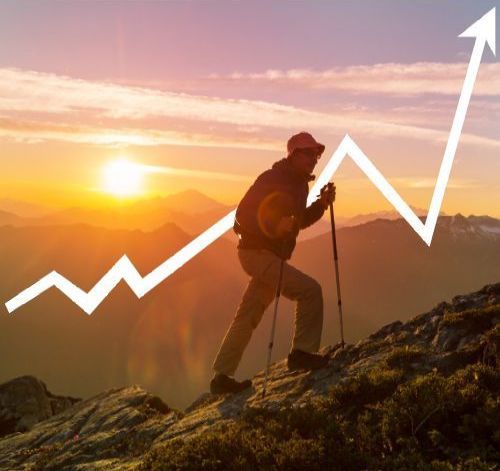Responsible Marketing: Earth Day Edition
SHARE WITH YOUR FRIENDS:
In the world of marketing, few things are as compelling as every day convenience. It sells products quickly, powerfully, and often without question. Just ask SC Johnson about their Ziploc bags.
Ziploc bags are a staple in nearly every American kitchen. They're tidy, handy, and easy to toss after one use. That’s exactly how they’re marketed: efficient and disposable. But that simplicity hides a much messier reality that single-use plastics are one of the leading causes for the build up of the microplastics that pose health risks to both animals and people. So what is Ziploc supposed to do now that it's commonknowledge that their product is contributing to this crisis?
Reduce. Reuse. Recycle... Right?
The average U.S. family uses around 500 Ziploc bags annually. Multiply that by millions of households, and we're talking over 58 billion plastic bags consumed every year in the U.S. alone. And while Ziploc bags are recyclable, how many consumers know that? More importantly—how many are actually recycling them?
Ziploc bags can be recycled but not in your normal curbside bin. First, they must be washed and completed dried. Then, you need to bring them to specific in-store plastic bag collection sites (usually designated for recycling plastic shopping bags), which aren’t available everywhere. There’s no incentive program. No reminder at the point of purchase. No widespread awareness campaign. Just a quiet note buried on their website.
For a product used by almost every household in America, that's a serious marketing oversight—or perhaps a strategic omission to keep you buying more...
From Fossil Fuel to Food Storage
To be fair SC Johnson, the parent company of Ziploc, has made notable strides toward sustainability in its operations—reducing waste and investing in renewable energy. But at it's core the process is still using low-density polyethylene (LDPE), a plastic derived from fossil fuels, and each bag’s creation includes high-energy processes like fracking, refining, and steam cracking—methods responsible for major greenhouse gas emissions, groundwater contamination, and toxic waste generation. Check out this cool deep dive into the production and recycling process of these products: A Lifecycle Analysis of Ziploc Bags.
Plus the product itself remains a problem: a single-use plastic that doesn’t biodegrade, is hard to recycle, and contributes to both land and marine pollution. Most Ziploc bags are used once and thrown away. And even if they can be reused or recycled, there’s no mainstream push to do so. That's where marketing could play a pivotal role.
The Power of Marketing
Why don't we see messaging from Ziploc to wash and reuse our bags? Because that's the only way they can sell more, faster. But what if there was another way? Believe me, there is!
Have you ever heard of Patagonia? If you've ever taken a hike, I bet you have. They're an apparel retailer who sell high quality outdoor clothing but also focus on environmental efforts. So much so that they ran a marketing campaign encouraging shoppers to NOT buy their top selling fleece jackets because of environmental impact the production of it causes. Instead, they encouraged people to buy a used second-hand Patagonia jacket because their products are built to last.
They saw their revenues grow around 30% in the first year after that campaign! Your can read a quick article about their amazing story by clicking here.

What Story Is Your Marketing Telling?
The goal of this blog is not to bash Ziploc, but to show an example this Earth Day that will hopefully spark some reflection back into your own business. Are there ways that you can make changes in your operations to reduce the overall environmental impact and lead to healthier lives for us all? As a consumer, yes I can wash out my Ziploc bag and reuse it or reach for a container with a lid to repackage things instead, but it's a very small drop in the big bucket of total Ziploc bags being produced each year. We need to think of ways to make big changes in our businesses to really change the trajectory of the quality of life our planet has as a whole.
Plus, these changes make great marketing campaigns that can grow your business and gain new loyal followers of your brand! I would encourage you to find "green" improvements if not for the planet, then at least for a great promotional opportunity. Let us help get out the word on the moves you're making for Earth Day (and every day) to build sustainability into your marketing messaging. Click the button below to get started!
SHARE WITH YOUR FRIENDS:







